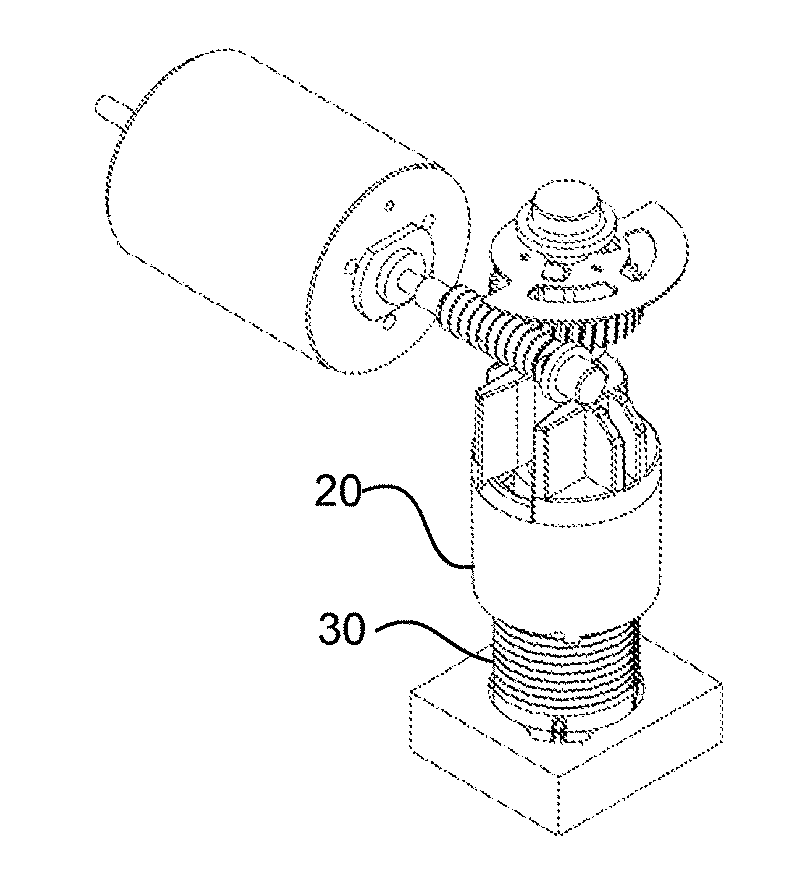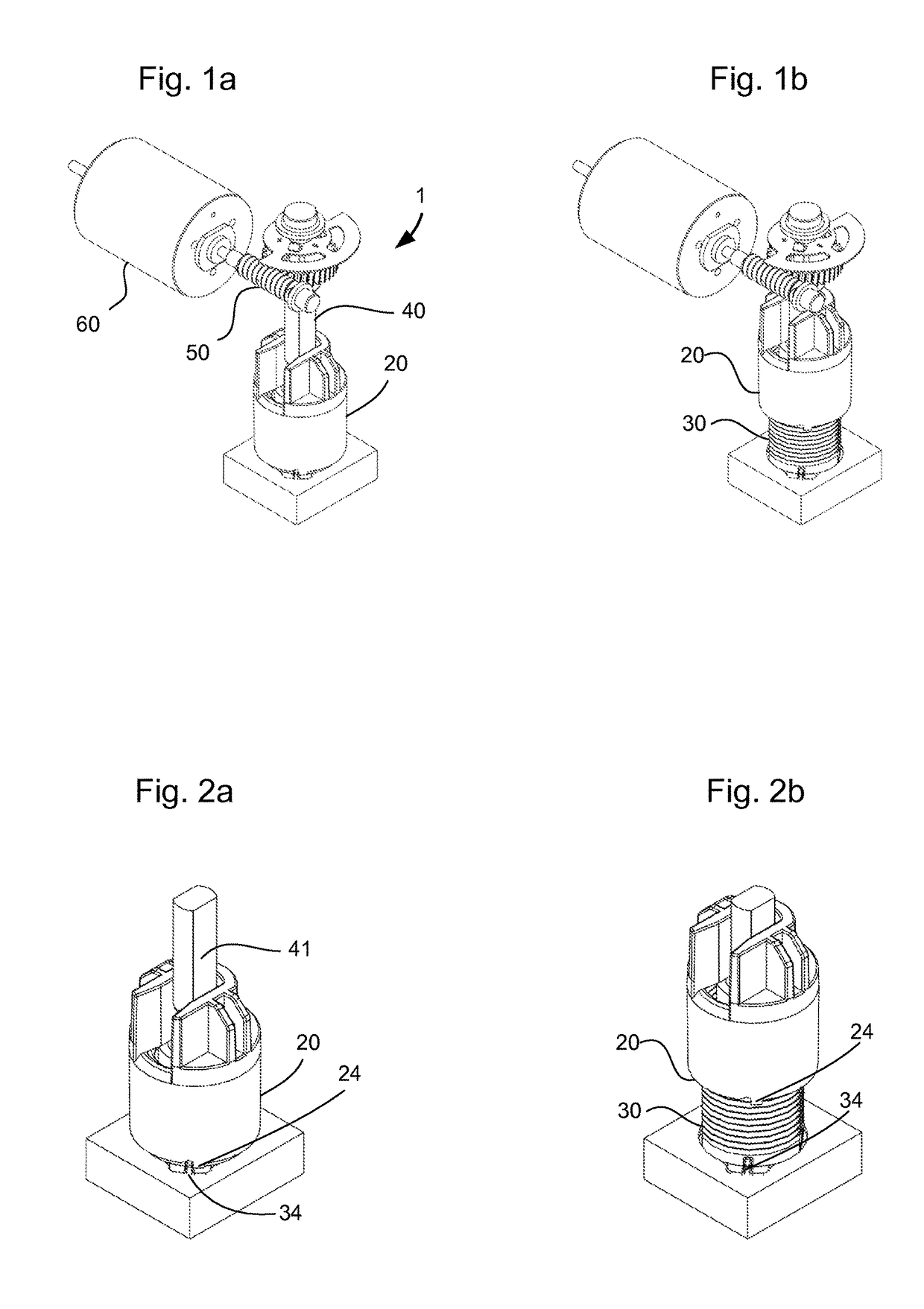Pump
a technology of syringe pump and syringe body, which is applied in the field of syringe pump, can solve the problems of inability to know for sure whether the user cannot always be certain if the syringe pump is dispensing fluid, and the conventional syringe pump also suffers, so as to reduce the height and therefore the volume of the system, the effect of easy connection and moulding
- Summary
- Abstract
- Description
- Claims
- Application Information
AI Technical Summary
Benefits of technology
Problems solved by technology
Method used
Image
Examples
Embodiment Construction
[0040]The present invention has identified that conventional syringe pumps are unsuitable for many fluidic and microfluidic applications. For example, WO 2009 / 077734 hereby incorporated by reference, relates to the formation of layers of amphiphilic molecules, in which nanopores can be deployed to provide an environment which can be useful, for example, for sequencing polynucleotides. This is an example of a ‘nanopore application’, referred to below. The formation of the bi-layer, the provision of the nanopores, and the subsequent provision of test fluids require careful control of the fluidic environment, both in mechanical and chemical terms. In the case of pumping lipid to form bi-layers, an extremely slow pumping speed is required. An example range is between 1 μl / s to 0.1 μl / s. The stick / slip issues with conventional elastic-sealing syringe pumps makes control of such flow rates extremely problematic, and can make repeatability of experiments very difficult. This is particularl...
PUM
| Property | Measurement | Unit |
|---|---|---|
| flow rates | aaaaa | aaaaa |
| flow rates | aaaaa | aaaaa |
| flow rates | aaaaa | aaaaa |
Abstract
Description
Claims
Application Information
 Login to View More
Login to View More - R&D
- Intellectual Property
- Life Sciences
- Materials
- Tech Scout
- Unparalleled Data Quality
- Higher Quality Content
- 60% Fewer Hallucinations
Browse by: Latest US Patents, China's latest patents, Technical Efficacy Thesaurus, Application Domain, Technology Topic, Popular Technical Reports.
© 2025 PatSnap. All rights reserved.Legal|Privacy policy|Modern Slavery Act Transparency Statement|Sitemap|About US| Contact US: help@patsnap.com



